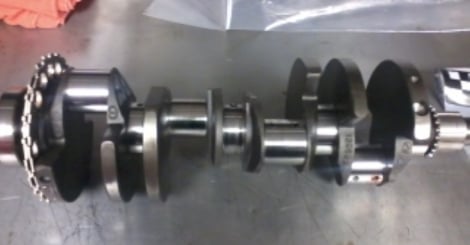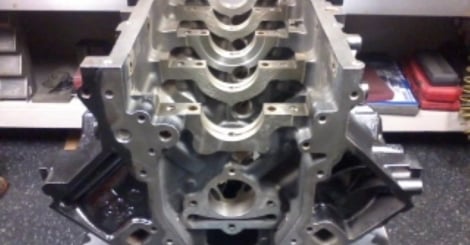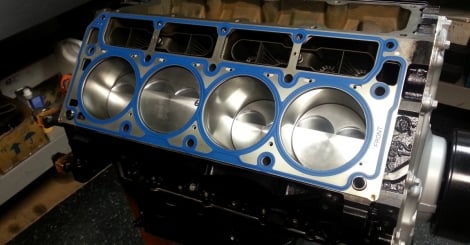Over the last several years, the circle-track world has come around slowly to the idea of using fuel-injection in its rulesets. Dave Arce of Arce Enterprises [1] and the Fuel Injection Racing Association [2] is spearheading the revolution on one front in the Lucas Oil Modifieds Series [3],
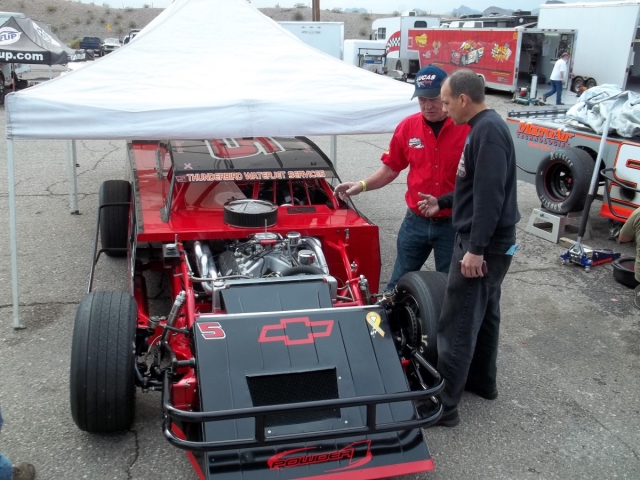 [4]The LOMS holds short-track events on the West Coast, and up until recently, had a closed set of rules that permitted carburetion only for its racers. Arce, looking to lower costs and increase participation, devised a way to change the status quo. The engine rules for the class state a 410 cubic-inch maximum, with iron engine blocks. Any American-make engine is allowed, but it must be able to be used in a conventional passenger car without modifications – which means that the racers have been somewhat limited in engine selection in years past. In addition, aluminum cylinder heads are permitted, but must carry an extra 50-pound weight adder, leaving Arce to work hard to develop a new program.
[4]The LOMS holds short-track events on the West Coast, and up until recently, had a closed set of rules that permitted carburetion only for its racers. Arce, looking to lower costs and increase participation, devised a way to change the status quo. The engine rules for the class state a 410 cubic-inch maximum, with iron engine blocks. Any American-make engine is allowed, but it must be able to be used in a conventional passenger car without modifications – which means that the racers have been somewhat limited in engine selection in years past. In addition, aluminum cylinder heads are permitted, but must carry an extra 50-pound weight adder, leaving Arce to work hard to develop a new program.
To that end, he’s managed to get the technical department for the racing series to approve the LQ9 GM engine, which can be found in junkyards all over the country for a song and a dance. The LQ9 uses the required iron engine block and aluminum heads, and engine builder Arce wanted to prove its mettle and competitiveness on the track – but couldn’t do so without the sanctioning body’s blessing.
Arce's LQ9 program uses the stock block and crankshaft along with a set of aftermarket connecting rods and custom pistons for competition.
“I was doing some development work with the LQ9, which is the cast-iron version of the LS engine family. The late-model trucks have the 4.8, 5.3, 6.2 engines in them with the iron block, and the only way I could get the newer generation engine into the series was to use this engine design. I got the series to OK the engine because it was offered everywhere and was very common. My idea was that since racing is so very expensive, I was looking for an avenue to lessen expenses for the racer. My first version of this was a 5.3 out of a Silverado 1500, and it’s been great. It was cheaper to build than a typical Gen I engine, and I was able to build it in a fashion to run 91 octane fuel and produce the same amount of power as the Gen I engines are making,” says Arce.
Once the racing series offered approval, there was one sticking point – they didn’t want any one racer to have any sort of advantage over another. As he mentions in the video, once the engine platform was accepted, he had another goal – to add fuel injection to the mix. To that end, he started a development program with David Page, Brian Reese and engineers at F.A.S.T. [8], by implementing the EZ-EFI system into the mix. Although the EZ-EFI is not legal at this time for the competitors in the series, Arce is testing with it on the track to prove its mettle.
The throttle-body injection system fits onto any manifold that uses a 4150 flange and is also usable on the Gen I engines – so a competitor doesn’t have to make use of the entire engine program, but can retrofit the injection system to their existing engine. The system is capable of supporting 450 to 650 horsepower, which covers everyone racing in the series.
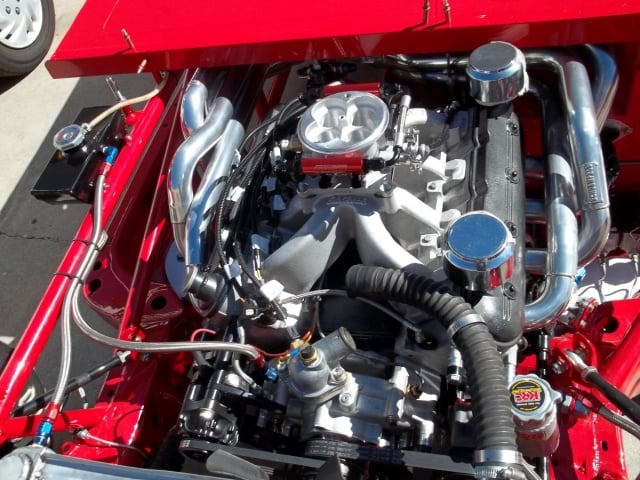 [9]
[9]Along with the blessing of the Lucas Oil Modifieds Series, Arce has developed this program to use the F.A.S.T. EZ-EFI for circle track competition.
The EZ-EFI is self-tuning, meaning that competitors will no longer need to spend time between heats changing jets or fooling around with trying to maximize their engine for the conditions on that particular day. Through the use of a wideband oxygen sensor, over the course of a couple of laps, the EZ-EFI will make competition easier for the racers in the series to tune their vehicles to perform best on the track.
Arce tested the engine and fuel-injection setup during practice for an event last weekend in Lake Havasu, Arizona, and was thrilled with its performance.
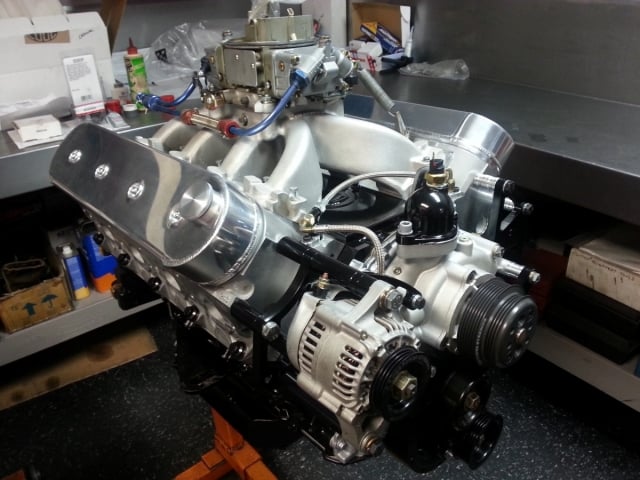 [10]
[10]The engine is currently topped with a carburetor for one more race, and then the EZ-EFI has been deemed legal for the rest of the season. This is a tight package that lowers the cost of racing for the competitors.
“This is such a great package to have for circle track racing. We’re heading towards a very efficient race package for everyone. It was great on the track – the only advantage I had over my competition is that I didn’t have to do anything with it. I was able to tune my chassis a little bit, walk around the pits and visit with people – it was incredible,” Arce tells EngineLabs [11]. “It was a little bit odd at first over the first couple of laps while it was thinking, but it was flawless for the most part. It was real pure and smooth and very organized.”
He made about fifty laps with the combination to give the other racers a chance to see and hear it, and was also able to report more about the overall performance to the sanctioning body.
As you can hear from the engine running in the video, it’s healthy and happy, and Arce reports that it’s actually easier and more responsive on the track – it comes out of corners more quickly and runs smoother through the rpm range as the hammer is dropped. He was unwilling to share dyno numbers, as might be expected, but he did say that he was confident the package would run up front with the racers using the Gen I engine.
According to Arce, there is an initial investment cost to get the LQ9 engine extras like headers and oil pan together, along with the initial costs of the EZ-EFI, but the overhead costs moving forward as racers adopt the platform are expected to be much less.
